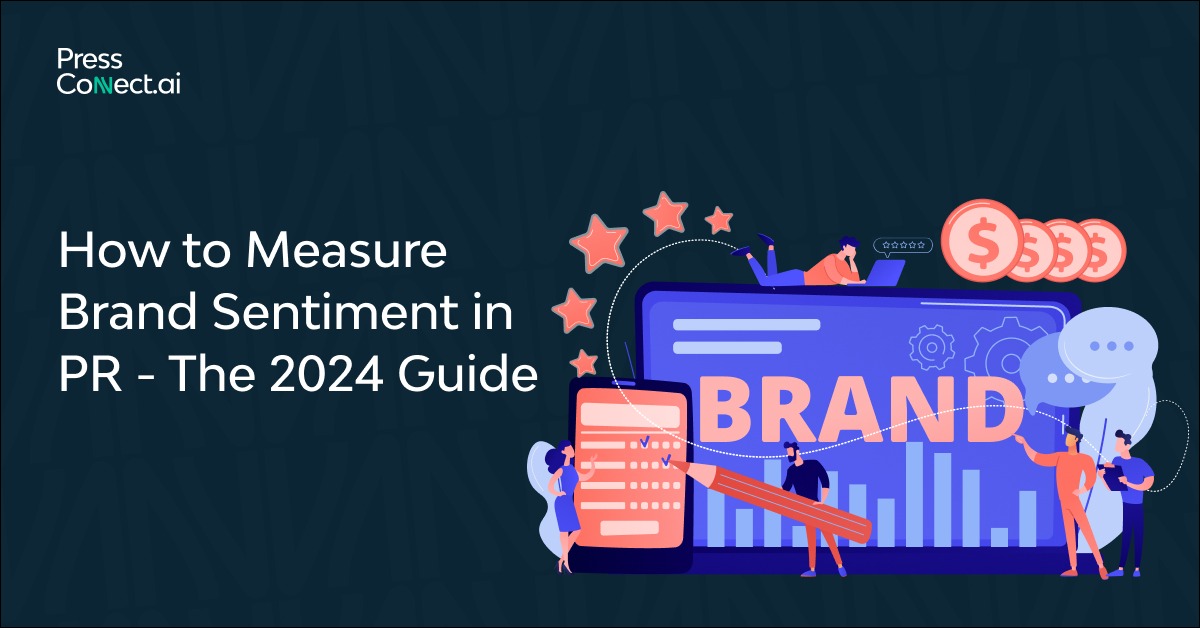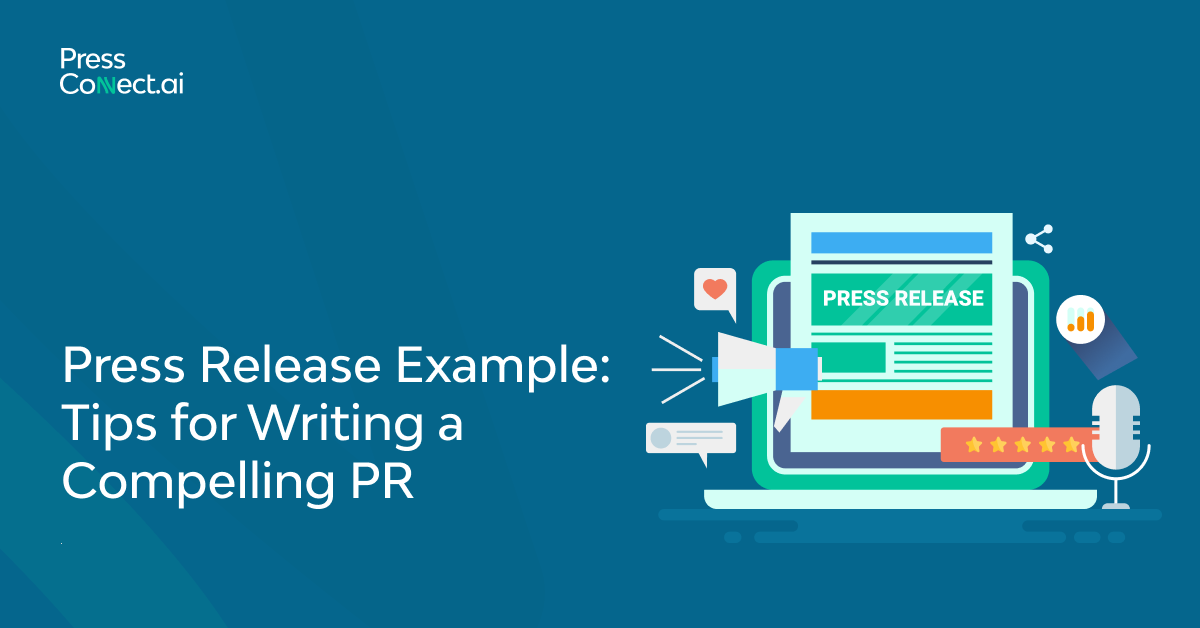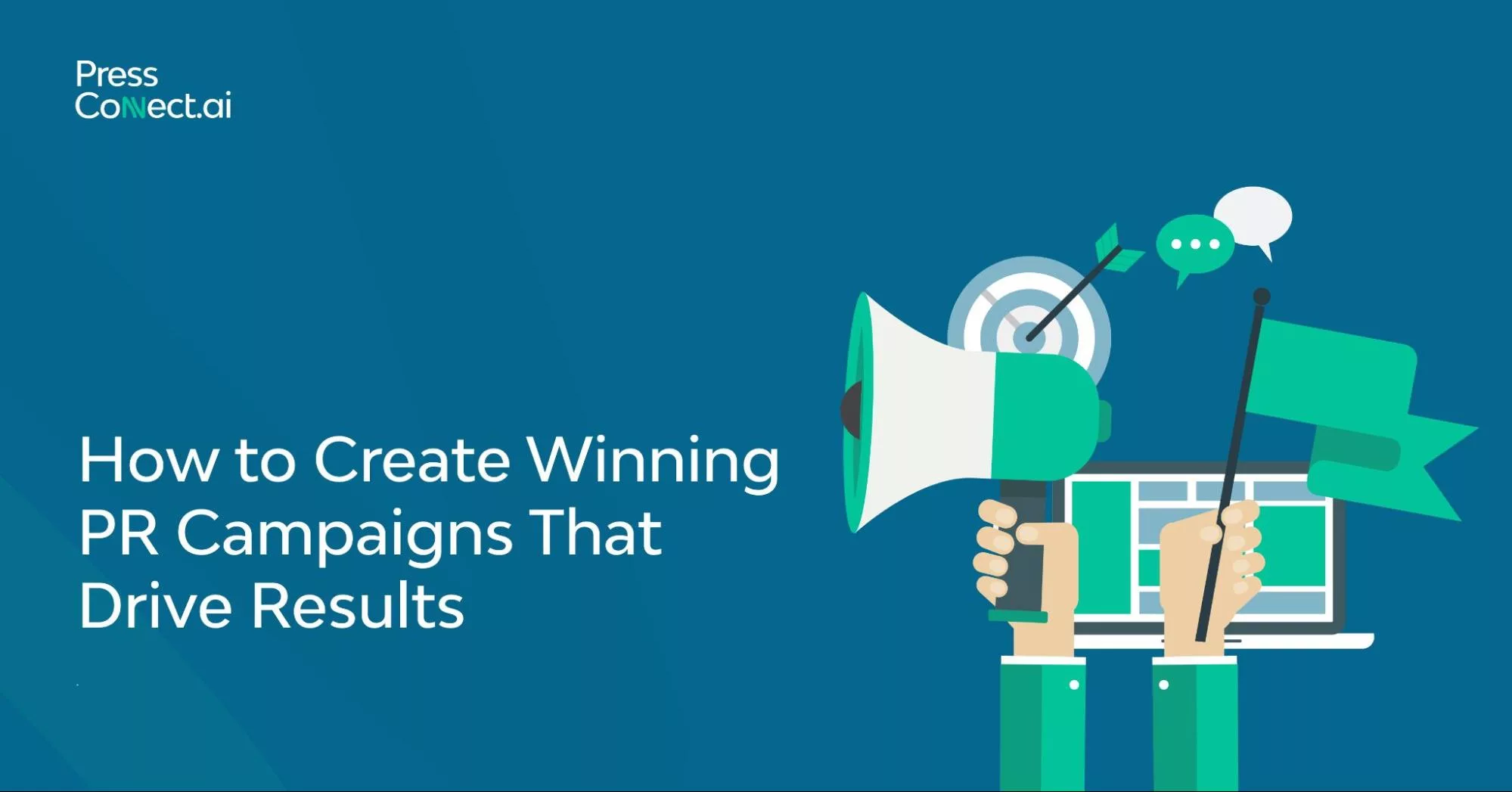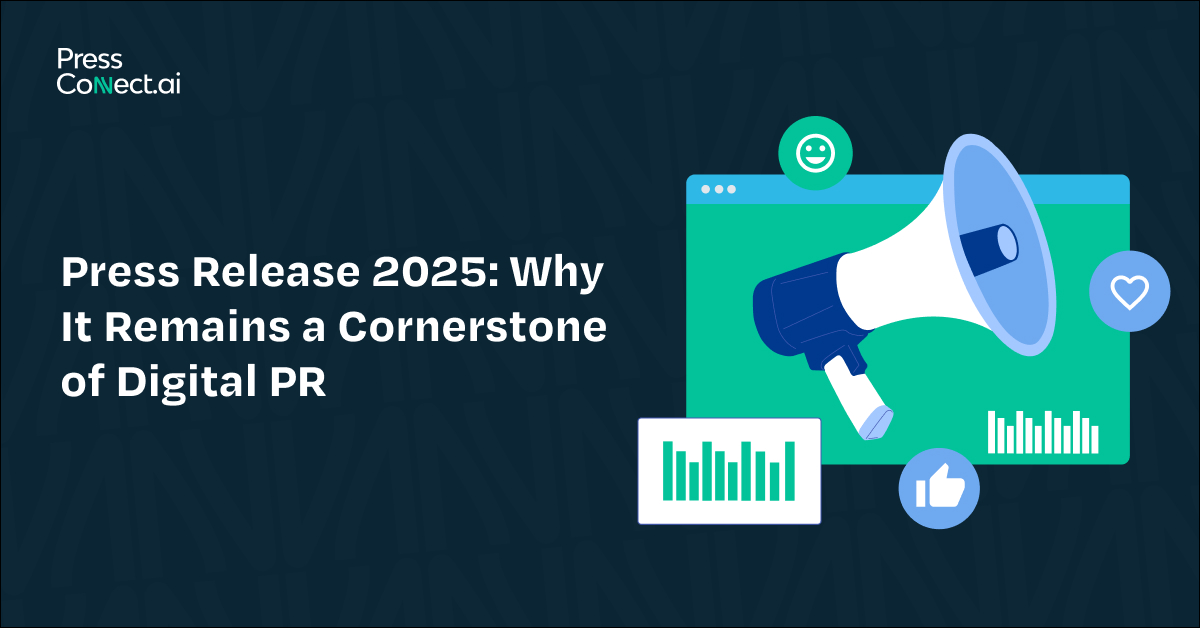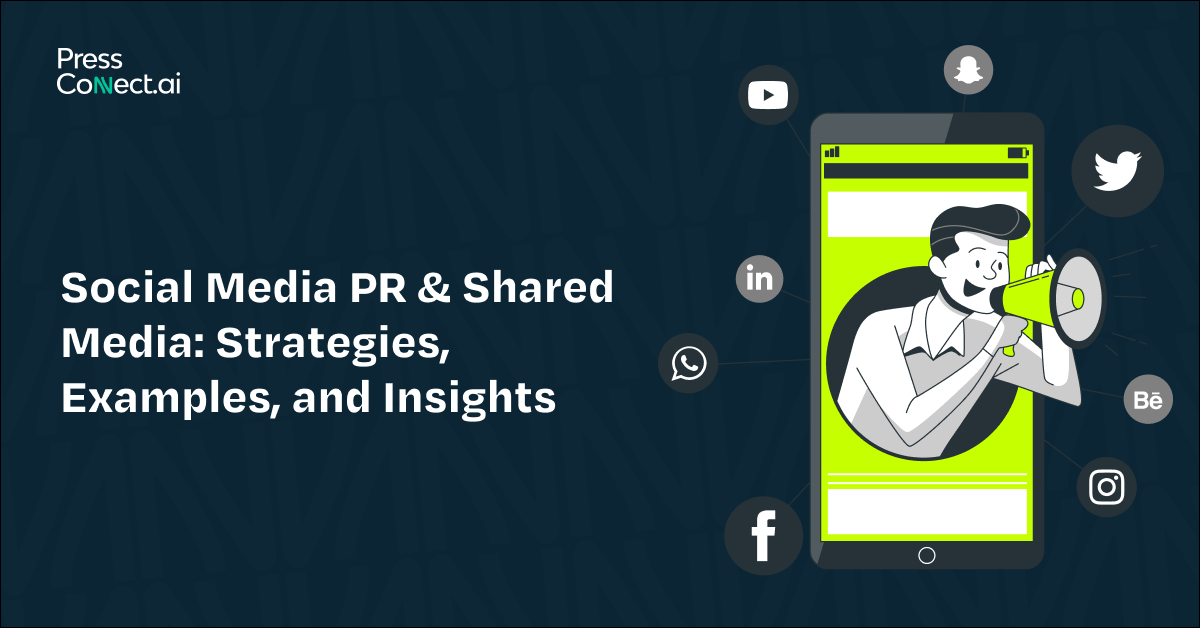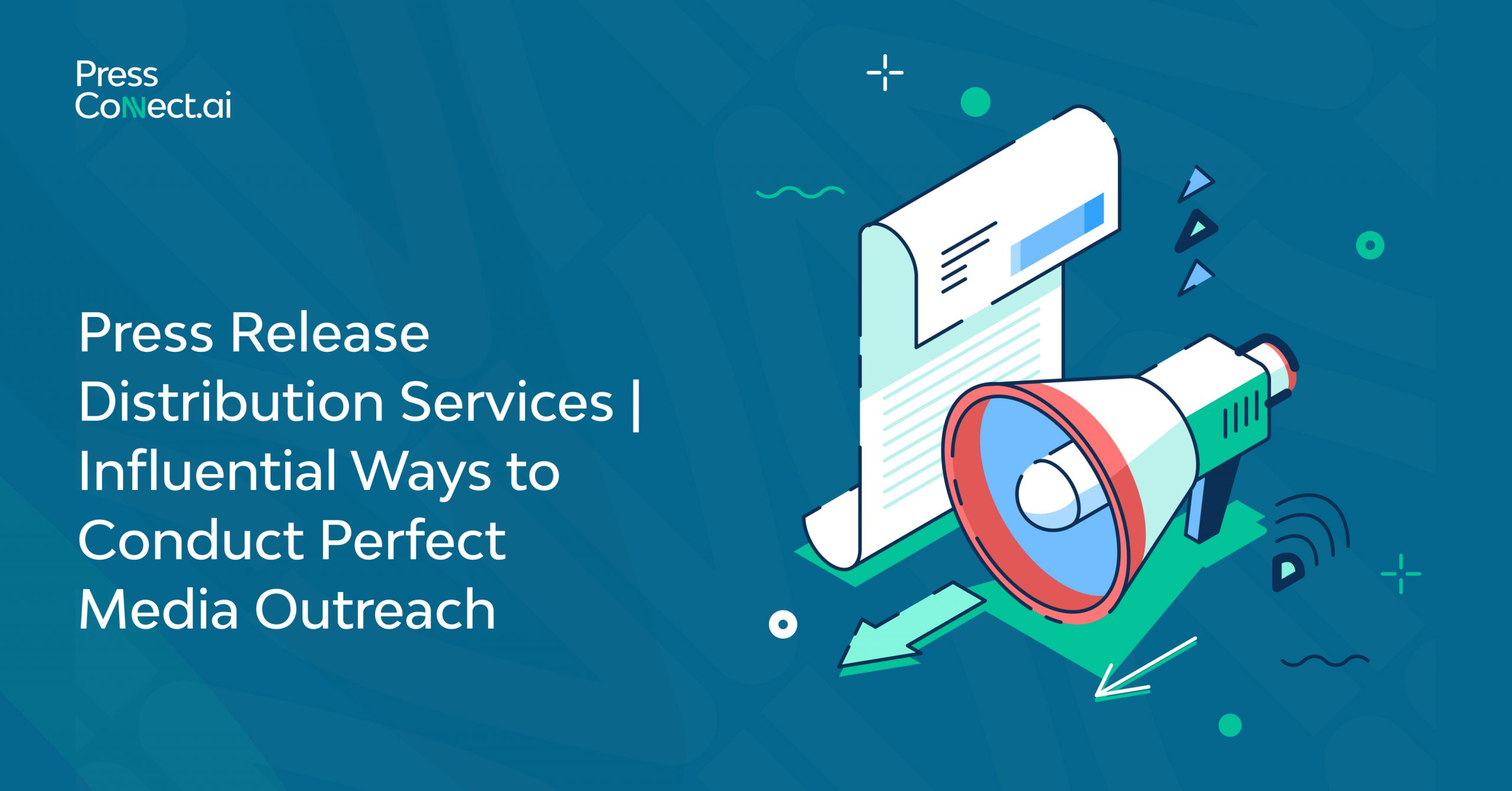How to Measure Brand Sentiment in PR – The 2024 Guide
Brand sentiment is the consumers’ overall or specific affective evaluation of a brand. It extends beyond essential elements of consideration with how people feel about the brand – whether those feelings are good, bad, or indifferent. Brand sentiment enables organizations to evaluate the effectiveness of their PR campaigns while modifying campaigns to meet the market’s desire.
This metric gives a complete and accurate picture of a brand image and provides an understanding of the emotional background of purchasing decisions. A brand tracker is a valuable tool that gives a company’s brand standing and perception in the dynamic market.
Why is Brand Sentiment Analysis Important in PR?
In 2023, the public relations (PR) worldwide market value amounted to an estimated 19.5 billion U.S. dollars, down from 20 billion dollars a year earlier. Brand sentiment analysis is essential to PR since it reveals how the public feels about the brand. For PR professionals, understanding sentiment can:
- Inform Strategy: Appreciating whether a brand has a positive or negative image guides how campaigns and communication should be formed.
- Mitigate Risks: Vulnerable events with negative attitudes suggest a PR crisis with an opportunity to undertake preventive measures.
- Enhance Engagement: If you successfully appeal to audiences’ hearts, creating even deeper bonds between consumers and brands is possible.
- Track Progress: PR measurement can be made over time with the help of sentiment analysis, which determines whether specific measures are successful or not.
With the growth of digital media and the increased influence of news and opinions traveling freely on social media, brand sentiment analysis cannot be a luxury but a necessity.
What is a Good Brand Sentiment?
Brand sentiment is ideal in which positive comments and feelings precede negative comments and feelings about the brand. The goal of going 100% positive is realistically unattainable; however, a high percentage of positive with a low rate of negative and more the percentage of neutral feedback indicates a good brand image.
Key indicators of good brand sentiment include:
- Good words from the customers and their testimonials.
- A coupling measurement of high engagement rates on social platforms.
- Very little negative coverage in newspapers/ magazines or online commentary.
- These include Retention and word-of-mouth from the current consumers.
Neutral sentiment also interferes because, by definition, it implies the absence of negative image associations, which serve as a good starting point for building positive ones.
Vectors, therefore, confirm that positive brand sentiment goes a long way in proving that customers are loyal to a brand and have a particular attachment towards it. This link results in repeat and first-time customers, recommendations, and everyone going on social media to recommend the products. On sites such as Instagram and Twitter, a positive brand attitude is usually associated with posts containing brand content, spirited mentions, and hashtags.
A positive attitude towards brands also occasionally lowers the chances of negativity since most of the public tends to overlook negative opinions. They recommend that it is essential to maintain consistency in their product or service quality but not shy away from communication to ensure a positive image is built. Creating a positive attitude towards a product or service can lead to more customer loyalty and brand stability at every difficult moment.
Brand Sentiment Analysis Techniques
During a July 2024 survey among public relations (PR) professionals in the United States and Canada, approximately 38 percent said their top press release-related challenge was not generating anticipated media pickup. One-quarter (or 25 percent) chose to ensure they reached the right people as their leading challenge. Brand sentiment analysis is a complex process comprising different techniques to evaluate consumers’ feelings about a brand. Here are some of the most effective methods:
-
Social Media Listening
Twitter, Instagram, and Facebook are some of the extensive sources of customer insights available to marketers. This way, social media monitoring hashtags, mentions, and topics reveals the public’s overall perception of the PR team in real-time. That’s where Sprout Social Hootsuite and some other tools come in handy as they assist in this process with analytics and trend-tracking.
-
Sentiment Analysis Tools
Some modern technologies that can be used with SMM tools are Brandwatch, Talkwalker, and Meltwater; they utilize artificial intelligence to determine the text’s tonality and the context of words regarding emotions displayed. These tools can handle big data to extract effects on brands from several customer reviews, comments, posts, and social media activity.
-
Surveys and Polls
A further advantage of performing a direct approach to the target group using surveys or polls is achieved here. Tools such as SurveyMonkey, Google Forms, etc. allow PR teams to ask questions concerning consumer experience and perception, for which getting qualitative data is helpful in addition to the quantitative data.
-
Media Monitoring
Monitoring the appearance of a brand in different media sources allows one to get an idea about how this brand is being regarded in society.
-
Customer Reviews and Feedback
Yelp, Google My Business, and Trustpilot are platforms where searching for reviews to assess overall mood is best. Reviewing common patterns in positivity and negativity can help identify the targets for change or the points to strengthen.
-
Net Promoter Score (NPS)
The Net Promoter Score is an overall established index demonstrating customer loyalty and satisfaction. Firms can frequently use the Net Promoter Score to clarify perceptions and find customers who would recommend their brand.
By integrating these techniques, brands can create a comprehensive sentiment analysis strategy that informs decision-making and enhances PR efforts.
How to Measure Brand Sentiment: Tools and Methods
Measuring brand sentiment helps PR professionals know how the audience takes the brand emotionally. This bit of knowledge is invaluable when developing strategies that will enhance engagement while avoiding possible missteps that could jeopardize the company’s image in the eyes of its target consumers. Therefore, these tools and techniques will help brands achieve more meaningful insights regarding their public image and act on it.
-
Utilize Sentiment Analysis Software
Modern tools like Brandwatch and Talkwalker analyze customer conversations to determine the overall sentiment toward a brand. These tools employ AI and machine learning to assess tone and context accurately.
-
Leverage Social Media Analytics
Platforms like Twitter and Instagram provide built-in analytics to gauge engagement and sentiment. Hashtags, comments, and likes often reflect how a brand is perceived.
-
Conduct Surveys and Polls
Surveys allow PR teams to ask targeted questions about consumer perceptions. Tools like SurveyMonkey or Google Forms make collecting and analyzing data easy.
-
Analyze Customer Feedback
Reviews and testimonials on platforms like Yelp, Google My Business, and Trustpilot provide unfiltered insights into customer experiences.
-
Monitor News Coverage
PR professionals must track how their brand is portrayed in the media. Positive press signals good sentiment, while negative coverage may require immediate attention.
How Press Connect Can Change Your Brand Sentiment Strategy
Sorting through all that brand sentiment and analyzing it can be difficult, so it’s essential to be exacting in method and equipped with knowledge and the right information-gathering tools. Press Connect is the best tool, and it is more so for PR specialists who seek to increase the positive emotional connection with their brands among the population.
This real-time media analysis, coupled with analytics and artificial intelligence-based sentiment analysis offered by Press Connect, enables the brands to make informed decisions, create relevant communication campaigns, avoid possible detrimental situations, and engage customers better. With these capabilities, brands can afford to set themselves as industry leaders and maintain a favorable public image. Press Connect is the solution.
Cut that old PR approach and boost your brand’s perception today with Press Connect!
